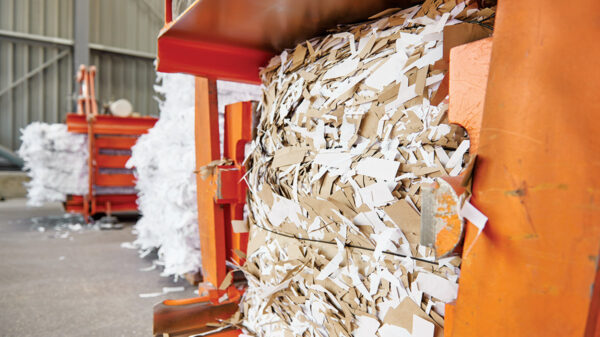From supply chain issues to contamination concerns to the continuous evolution of proposed tariffs, the metal recycling arena is facing its fair share of challenges. As such, metal recyclers across the country and beyond are trying to get a sense of how these current challenges will impact the industry long-term, and what that may mean for their bottom line.
According to Mark Whitley, chief executive officer of Whits Services Corporation, “metals recycling is like a game of Tetris – if you don’t get the pieces right, everything piles up and falls apart. The key is to combine technology and strategy so the pieces fit where they’re supposed to.”
As the chief executive officer of Whits Services Corporation, Whitley has more than 10 years of experience tackling the challenging aspects of recycling, including metals. As he explained, the metal recycling industry in particular is a beast.
“It’s tough, complex and without doubt not meant for the faint hearted,” Whitley said. “The industry hurdles, from lead and steel to more obscure metals, are very real and they don’t seem to be going away anytime soon.”
During the last few years, Tom Buechel, owner of Rockaway Recycling has not seen a slowdown of the metals recycling market on a macro level. Rather he’s only seen a slowdown in certain time periods. From his perspective, the metal markets are still strong and there are only a few select larger yards that he knows of holding onto any type of significant tonnage.
Within the aluminum sector of the metals recycling market, Brian Hesse, president and chief executive officer of PerenniAL Group, said the aluminum recycling market is ever changing. The U.S. lags behind most other countries when it comes to taking advantage of the recyclability of aluminum.
“We compare poorly when it comes to our annual aluminum percentage recycling data. The biggest change we see now versus the last several is tariffs,” Hesse said. “As it stands on March 31, 2025, aluminum scrap will not be tariffed coming into the U.S. This will make the U.S. market the most attractive sales ground for Mexico, Canada and Europe to sell off their scrap at attractive prices. Over the last 12 to 18 months there has been much talk about a scrap shortage but the current market dynamics, if sustained, will cause an influx of scrap into the U.S. and increase availability.”
Facing Challenges
As Buechel explained, the types of challenges facing the metal recycling marketplace depends on the time of year.
“In the short-term, the tariffs will have significant disruption on the markets – but over the next 12 to 18 months, I see and hear from others in the same space, that these conditions will re-establish and level out pricing,” Buechel said.
Buechel stressed that the current tariff situation is causing confusion throughout the recycling industry. “The quick run-up in copper prices sent shockwaves through the markets, widening spreads, creating mass sell-offs and will make for difficult short-term selling,” Buechel said. “Steel and aluminum seem to be able to benefit the most because of the better loop of recycling in the U.S.”
In addition, Buechel said any components in the battery space seem to be a tough item to move right now.
“Consumers or smaller businesses are not looking for, nor expecting, a negative charge for some of the new electronics that are coming out,” Buechel said. “That may lead to more landfill fires and problems with backup recycling plans, which that can cause major problems.”
Whitley pointed out that one of the biggest challenges in metals recycling today surrounds contamination and quality control, with contamination being one of the most persistent issues.
“Metals aren’t always collected in pristine condition. They are often mixed with other useless loads that compromise quality,” Whitley said. “It’s like finding a needle in a haystack, except the haystack here is on fire and the needle keeps changing its shape. Improving quality control requires better sorting technology and public education on proper disposal.”
Supply chain disruptions are also a concern among metal recyclers as the metal supply chain is currently in chaos due to recent global events. As Whitley explained, inconsistent standards, fluctuating regulations and endless shipping delays have made it virtually impossible to source recycled metals from overseas markets.
“While the domestic market still helps, that production is also very limited, making the supply chain equation even worse,” he said.
Regulatory compliance and environmental standards also add to the metal recycling industry’s complexity. For many metal recyclers, regulations are both a blessing and a curse as regulations vary across borders, which makes the import and export paperwork a regulatory maze that very few people navigate successfully.
“Additionally, the daily evolving environmental policies are challenging,” Whitley said. “Although these policies are essential, they make compliance a never-ending battle.”
Processing metals also demands a high level of resource investment, and the cost keeps climbing. Energy processes, technological maintenance and labor shortages are just some of the factors that are driving up expenses. To stay profitable, Whitley said companies are only left with the option to innovate or be left behind in the race.
Hesse added that the biggest challenge facing the U.S. aluminum scrap market is tariffs.
“If we force our current allies to become ‘trade war’ countries, it could impact the ability to attract scrap units into the U.S.,” Hesse said. “These ‘trade war’ countries could also put their own tariffs on aluminum scrap when it is exported, creating a situation where we cannot get the units needed to manufacture in the US.”
Potential Solutions
To address the challenges, innovation and collaboration are key. For example, at Whits Services Corporation they have integrated predictive analysis that helps optimize the supply chain and predicts disruption, to adapt to their effects accordingly. Whitley’s approach also combines cutting-edge technology with practical strategies to enhance quality control, reduce contamination, and streamline compliance. Under his leadership, the company has consistently delivered scalable, efficient recycling systems that redefine what’s possible in a sector plagued by inefficiencies.
“AI-driven sorting systems and block chain tracking have been some of the biggest contributors to our success through which we enhance our quality control, streamlined compliance and reduced contaminations,” Whitley said. “While the metals recycling industry faces undeniable challenges, innovative technologies and smarter strategies are paving the way for better solutions. By combining AI, predictive analytics and enhanced collaboration, the industry can overcome these obstacles and create a more efficient, sustainable recycling process.”
Hesse believes policy, tariffs and global relations are going to have a major impact on the aluminum trade industry.
“It’s a very large industry that not many people understand,” Hesse said. “At the end of the day, tariffs that increase the price of aluminum are going to have one, certain impact on the economy: higher prices for end consumers. There are too many variables beyond the aluminum industry’s control to make a sound prediction about the future. I certainly believe that as a country the U.S. needs programs that incentivize recycling a much larger percentage of aluminum by the public, to increase scrap for remelters to manufacture aluminum in the U.S.”
Published May 2025







